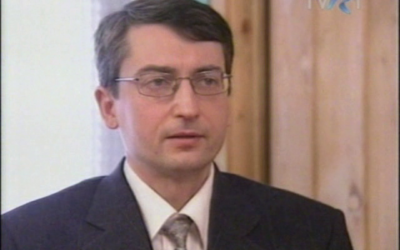Author: Calistrat M. Atudorei – 19/08/2019
The United States became a militarized state, a perpetual war machine, fundamentally oriented towards the domination of the other states, at all levels. As shown in previous works, this status is viewed in the theories of political realism, as an expression of any superpower’s tendency to achieve hegemony, thus ensuring its maximum degree of security. In terms of political realism, the Power of a state is chiefly conferred by the state’s military force. The higher the force of the army, the greater is the persuasion of that state on the others. Ultimately, “the law of force” is the strongest argument. It is useful to recall that political realism explains more precisely that the power of a state is its ability to convert latent resources (socio-economic components) into effective power (military power).
Following the logic of this power equation, we understand why the United States is obstinately seeking to control as many global resources and markets as possible and makes huge investments to deploy an army to dominate the entire planet. So in order to ground the Power, to feed the war machine, resources are needed. Resources became a strategic objective and for this reason the White House officially announced its determination, assuming that “uninhibited access to key markets, energy supply and strategic resources” is represents a “vital national interest for US” for which it is determined to resort even to “unilateral use of military power.”[1]
Nevertheless, market control means much more than access to resources. It means controlling the global economic and financial system as well. A decisive step in this direction was made after the Second World War, with the establishment of a strong network of global institutions. Beyond the pacifist and altruistic ideals expressed, these institutions are built in such a way as to ensure a substantial advantage for the US economic system. The US dollar is the reference currency for global foreign exchange reserves, based on which most trade are conducted and to which the World Bank (WB), the International Monetary Fund (IMF) or the World Trade Organization (WTO) relate. The petrodollar system, which continually favors, implicitly, the demand for US dollars in the global market, is, we could say, the very structural axis of US economical domination. I presented many examples that pointed out the aggressiveness with which US administrations require the petrodollar system keeping, any offense in this respect being severely punished at a political, economic or even military level.
[1] William S. Cohen, Secretary of Defense, Annual Report to the President and the Congress, 1999, p. 4
Continue reading, download the Analytical Dossier AD_23_2019
This article is an excerpt from the coming English version of Atudorei’s book: Planurile Americii Pentru Hegemonia Mondiala (America’s Plans for World Hegemony)

Calistrat M. Atudorei, romanian political scientist. His last work is: Planurile Americii Pentru Hegemonia Mondiala: Studiu, 2018
Calistrat Atudorei was born in Bacău, Romania, on March 4, 1968. He studied technical disciplines at “Gheorghe Asachi” University in Iași and worked for a period as engineer. For about ten years he collaborated with several human rights organizations and turned his interest to social sciences. Currently he is a PhD student at the Faculty of Philosophy at the University of Bucharest, where he focus on the field of International Relations.
He published articles related to social sciences in magazines and specialized sites in Romania, such as Lumea, the website of the Union of Professional Journalists or ActiveNews.
